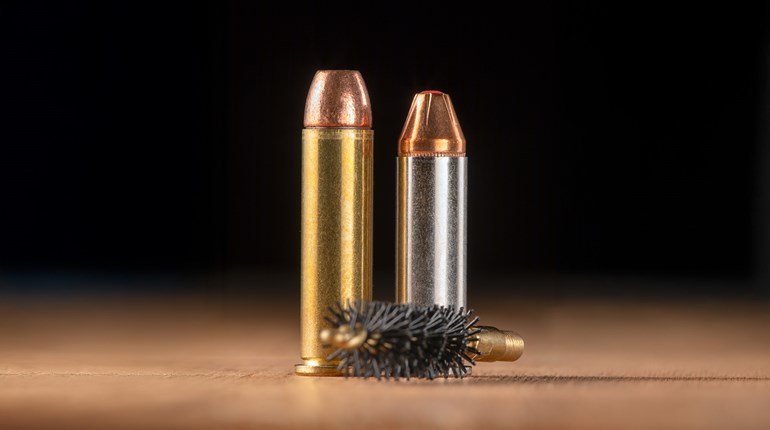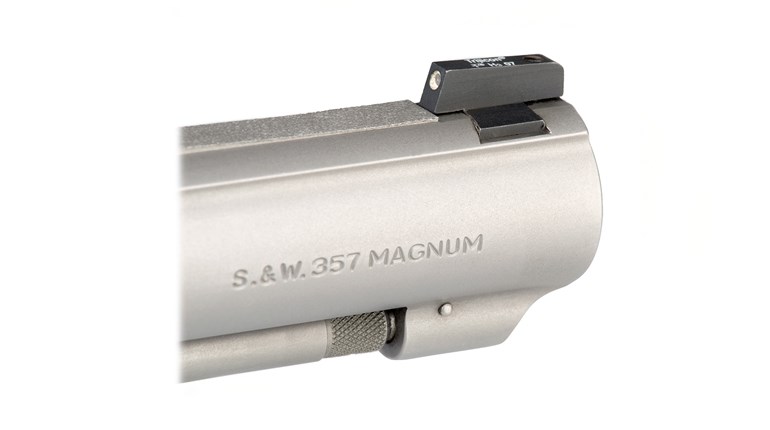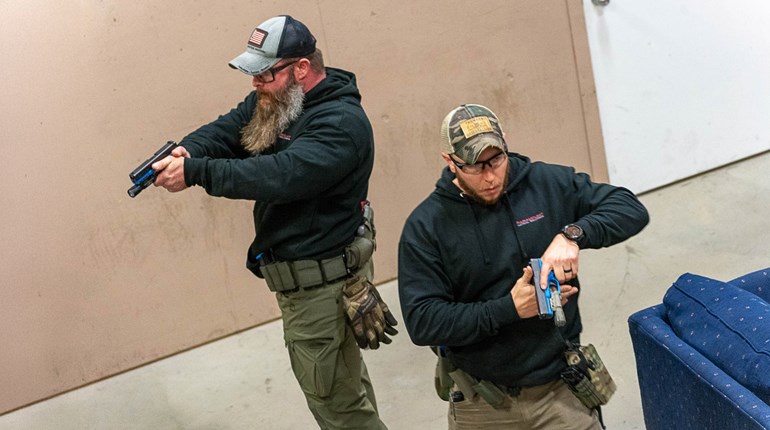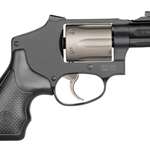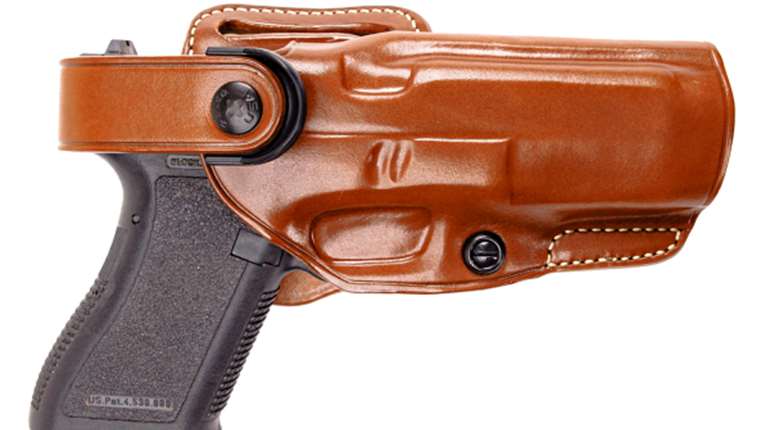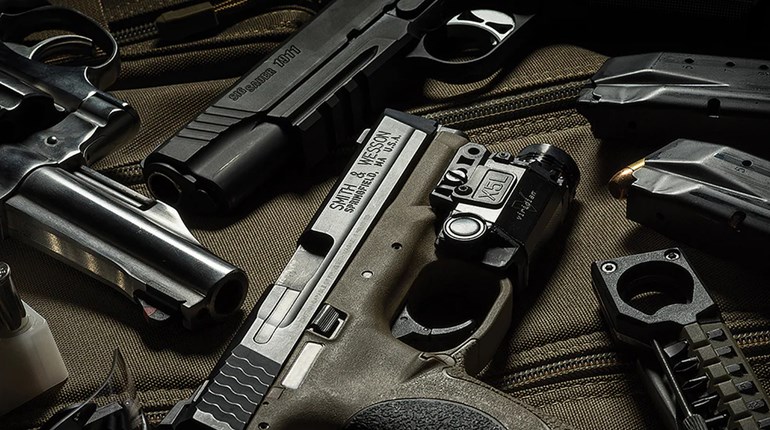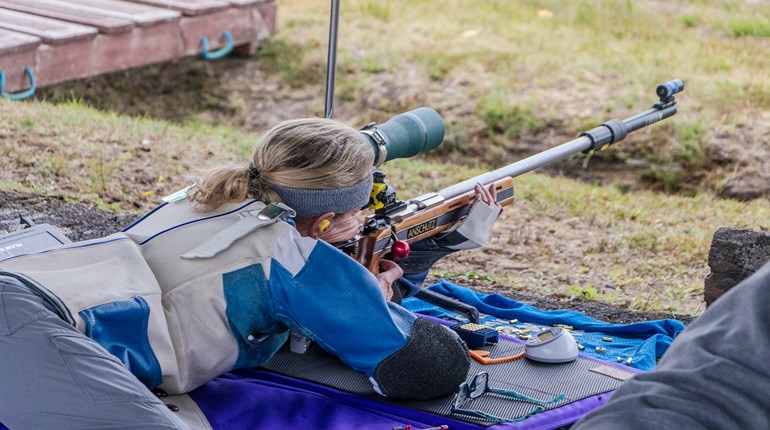
While staging the trigger prior to firing a shot is preferred by some trainers, the key to accurate shot placement requires smooth, fluid trigger control to be maintained throughout the prep and pull-through phases in order to ensure the muzzle remains on target.
The Problem
In your concealed-carry class, the instructor mentioned that staging the trigger, also referred to as trigger prepping, was a waste of time and should be ignored for defensive, competitive and speed shooting. In a previous class, a different instructor spent a lot of time teaching trigger operation including taking up the slack, pressing through the break, holding momentarily for follow-through, recovering to the target, releasing to reset, firing the next shot and repeating as needed. You realize there can be differences in opinion, but really can’t make the distinction as to why one method is any better than the other—aside from personal preference. You acknowledge that learning is evolutionary, but don’t want to practice incorrect techniques. Is one method truly better than the other for speed and accuracy, or does it boil down to what works best for each individual?
The Solution
Trigger manipulation on any firearm can be distilled down to causing the gun to fire while the muzzle is in the proper proximity to the target to hit where you’re aiming. Time may or may not be a concern, and the degree of precision placement of the hit on the target could be a factor, too.
From a trainer’s perspective, the skill level of the student has an impact on how trigger operation of a handgun is presented. In addition, the objectives of the class will guide the methods of trigger manipulation as well as how they are taught.
Instructors teaching foundational-level classes find the best success of teaching trigger manipulation by controlling the trigger in both directions. In fact, one of the simpler methods of teaching trigger operation is to maintain finger contact with the trigger from the beginning of a shot (or shot sequence) until no more shots are required—after which the trigger finger is extended along the frame of the pistol, away from the trigger. For most people, this is the most efficient means of trigger movement because it minimizes the motion required in either direction to shoot one or multiple shots.
When taught correctly, the sequence moves the trigger from initial contact with the finger to take up the trigger’s slack prior to the break point. This “preps” it, readying the trigger for the extra added pressure to fire the gun. What must be emphasized is both the “prep” and the pull through to release the shot must be smooth and fluid in order to maintain the muzzle’s position on the target.
It is at the point where the trigger fires the shot that many experienced shooters and instructors disagree as to how the trigger should thenceforth be handled. I won’t argue all the theories, but I will offer my opinion, which has proven successful.
Assuming your eyes are open, seeing the flash from the muzzle surrounding the front sight and the brass escaping the ejection port are indications the bullet has cleared the muzzle on its way to the target. The trigger can then be released forward to the reset point as the muzzle reaches the peak of its upward movement. As the muzzle settles back toward its original position, the trigger is “prepped” and the shot is released with the additional pressure applied as the sights (and therefore the muzzle) find the target. This can be repeated as many times as there are shots required with the utmost of efficiency using smooth, fluid, but not necessarily slow movement.
To be fair, some shooters—mostly seasoned professionals in the competitive ranks—can slap the trigger each time their gun is fired without moving the muzzle off the target. Obviously, there is no “trigger prep” for the trigger slappers, as their fingers often lose contact with the trigger each time they fire a shot.
In either case, if the target is being hit with satisfactory speed and accuracy, there is no controversy, just two methods of accomplishing the same thing.
In my experience, teaching foundational shooters to slap the trigger most often ends up with the student jerking the trigger, resulting in corrective action requiring trigger control in both directions to achieve the desired accuracy.
Sometimes, in the evolution of learning, techniques change and may even reverse themselves as the objectives and requirements become more complex. It pays to be flexible and open to alternative methods of achieving one’s goals.












